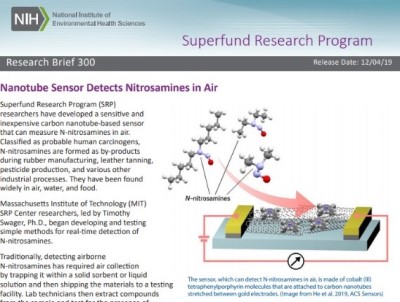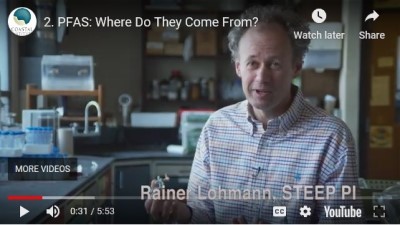Science Leadership
Superfund Research Program (SRP) staff and grant recipients are committed to advancing research by presenting innovative findings, tools, and technologies to stakeholders in academia, government, and communities.

The SRP celebrated its 300th Research Brief in December. The first Research Brief was released in 1997 and featured work from the University of California, Davis (UC Davis) SRP Center. As part of the milestone, the SRP announced a new monthly feature of the Research Brief, a summary video. The summary videos are posted each month to the NIEHS YouTube channel and each Research Brief page .
SRP Health Scientist Administrator Heather Henry, Ph.D., was selected as chair for the spring Federal Remediation Technologies Roundtable (FRTR) meeting, scheduled for May 13, 2020, in Reston, Virginia. The spring meeting will focus on innovative tools to enhance bioremediation. The FRTR works to build a collaborative atmosphere among federal agencies involved in hazardous waste site cleanup.
SRP Director Bill Suk, Ph.D., was featured on an episode of Healthy Living Healthy Planet Radio .He discussed the chemicals humans are exposed to throughout their lifetimes. He focused on exposure to arsenic in drinking water, food, and consumer products and the many ways it can harm human health.
SRP grant recipients and staff were featured in a special issue of the International Journal of Environmental Research and Public Health, New Directions in Environmental Communication Research .The issue featured studies by SRP Center grant recipients at Dartmouth College, Michigan State University, Northeastern University, and UC Davis. It also included an article by SRP staff, with Health Specialist Brittany Trottier as corresponding author, on the importance of community engagement and research translation within the program.

The University of Rhode Island (URI) SRP Center developed an eight-part video series, Silent Chemicals, Loud Science ,on per- and polyfluoroalkyl substances (PFAS). PFAS are commonly used in consumer products and firefighting foams and can accumulate in the environment. The videos explain what PFAS are, where they come from, and how they affect ecosystems and humans. Each short video features interviews with researchers and trainees to highlight research from the URI SRP Center.
Health Scientist Administrator Michelle Heacock, Ph.D., is the lead author of a new paper focused on sharing SRP data to reduce environmentally associated disease and promote transdisciplinary research. The article describes how SRP research teams, which comprise cross-disciplinary scientists focused on similar research questions, are well positioned to use data to leverage previous findings and accelerate the pace of research.
Henry recently joined the Water Sustainability through Nanotechnology Signature Initiative (Water NSI) working group, part of the National Nanotechnology Initiative's strategic efforts to take advantage of the unique properties of engineered nanomaterials to address water challenges. The Water NSI working group identifies opportunities to build awareness about federally funded innovative nanotechnology research in water treatment and detection and to enable transfer of innovative technologies to end users.
For the Houston-Galveston-Brazoria (HGB) region, a team of researchers at the Texas A&M University SRP Center led by Weihsueh Chiu, Ph.D., developed HGBEnviroScreen ,a tool that integrates and visualizes national and local data on social vulnerability, baseline health, environmental exposures and risks, environmental sources of pollution, and flooding. Using the tool, the researchers aim to identify and prioritize regions of heightened vulnerability, in part to assist communities in understanding risk factors and developing action plans.
to Top



